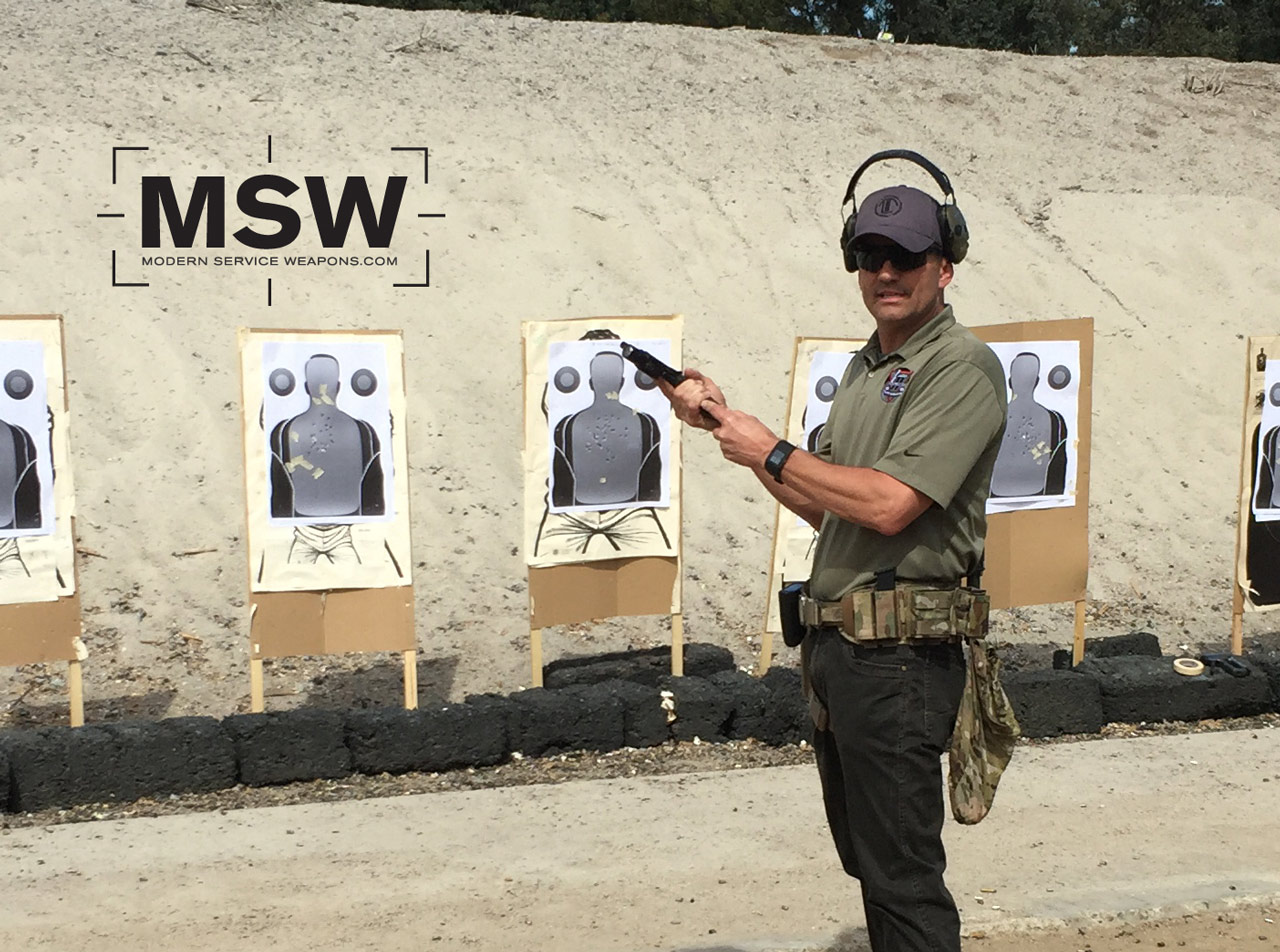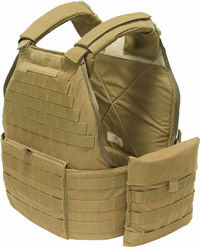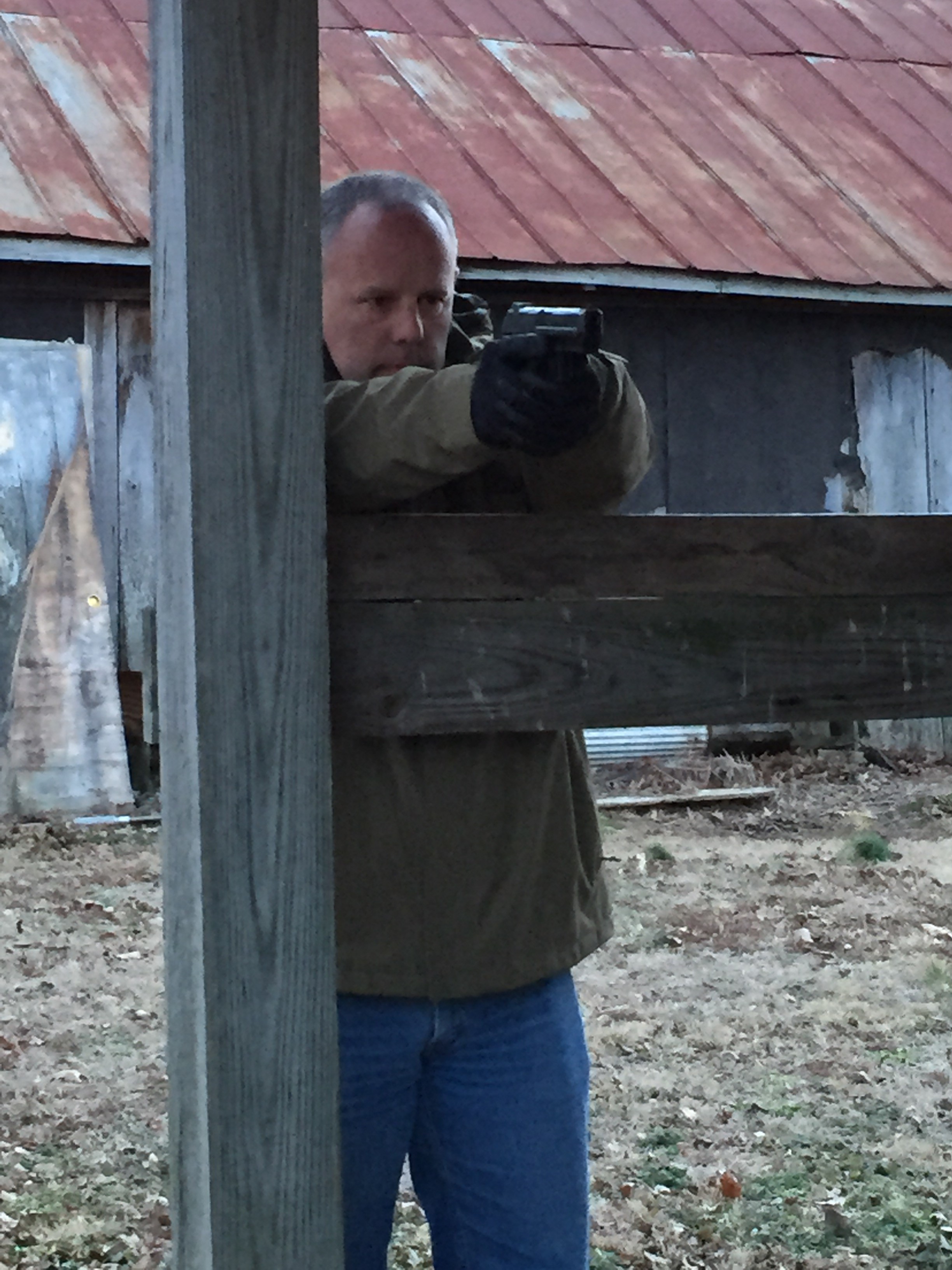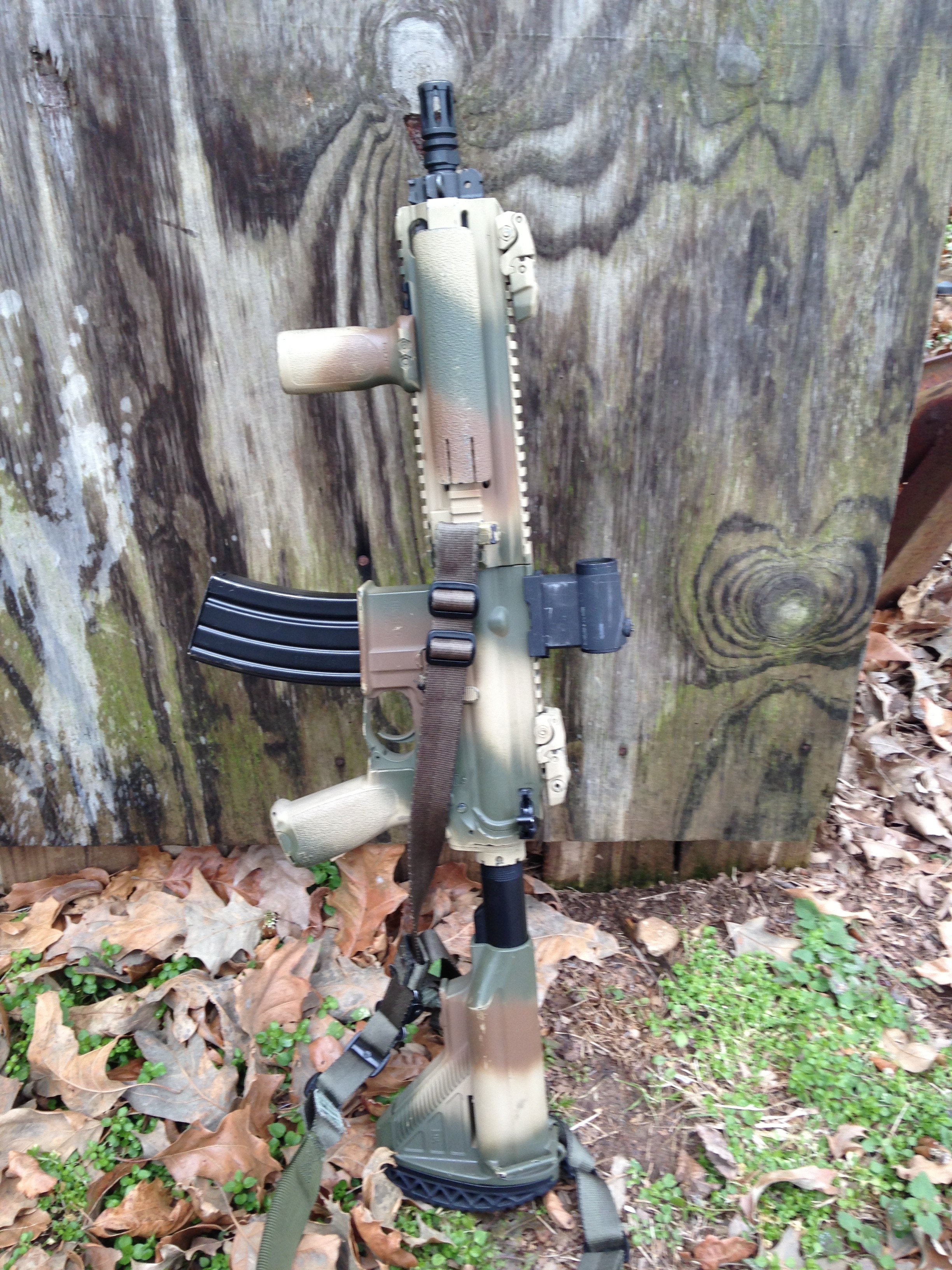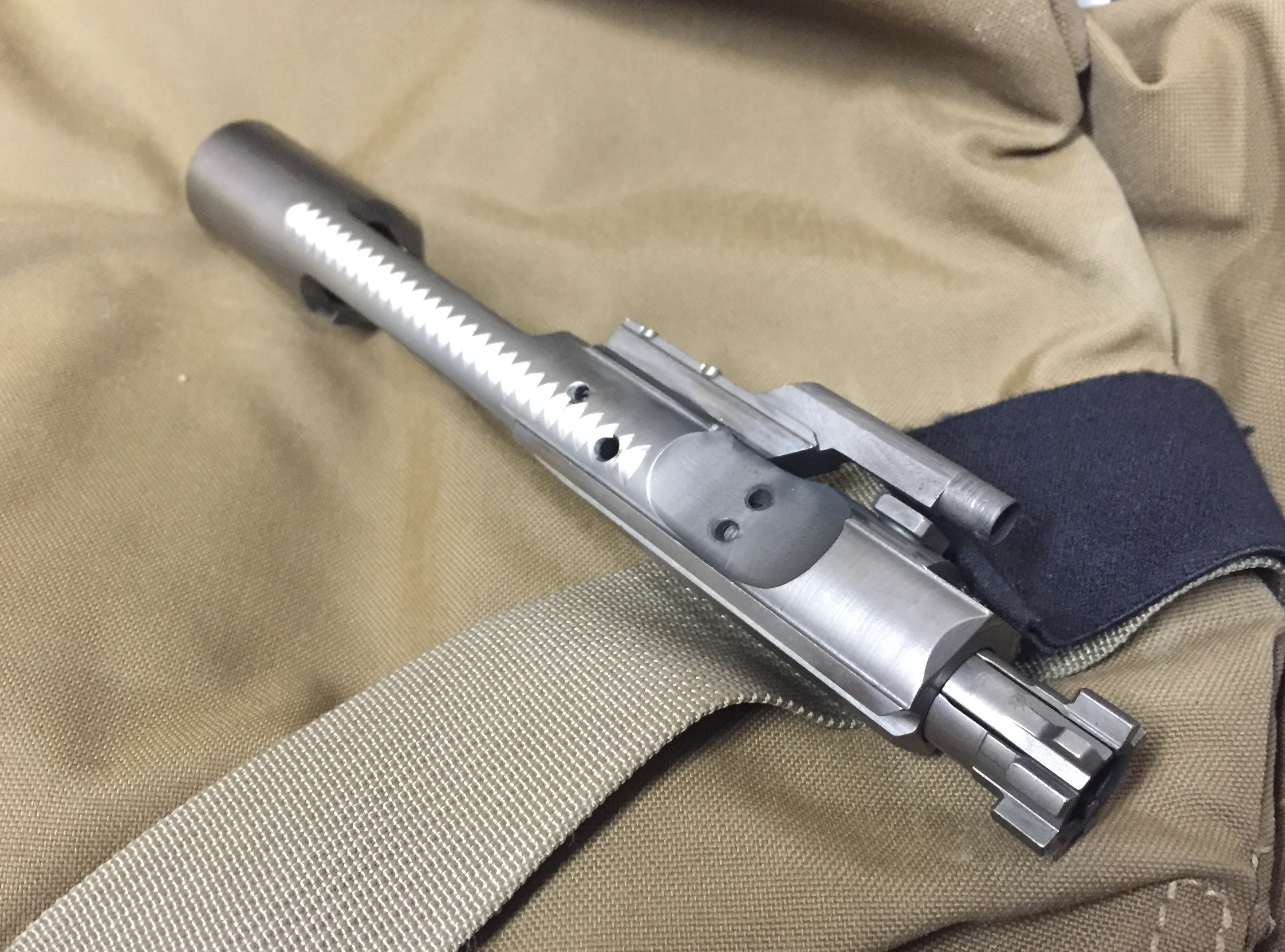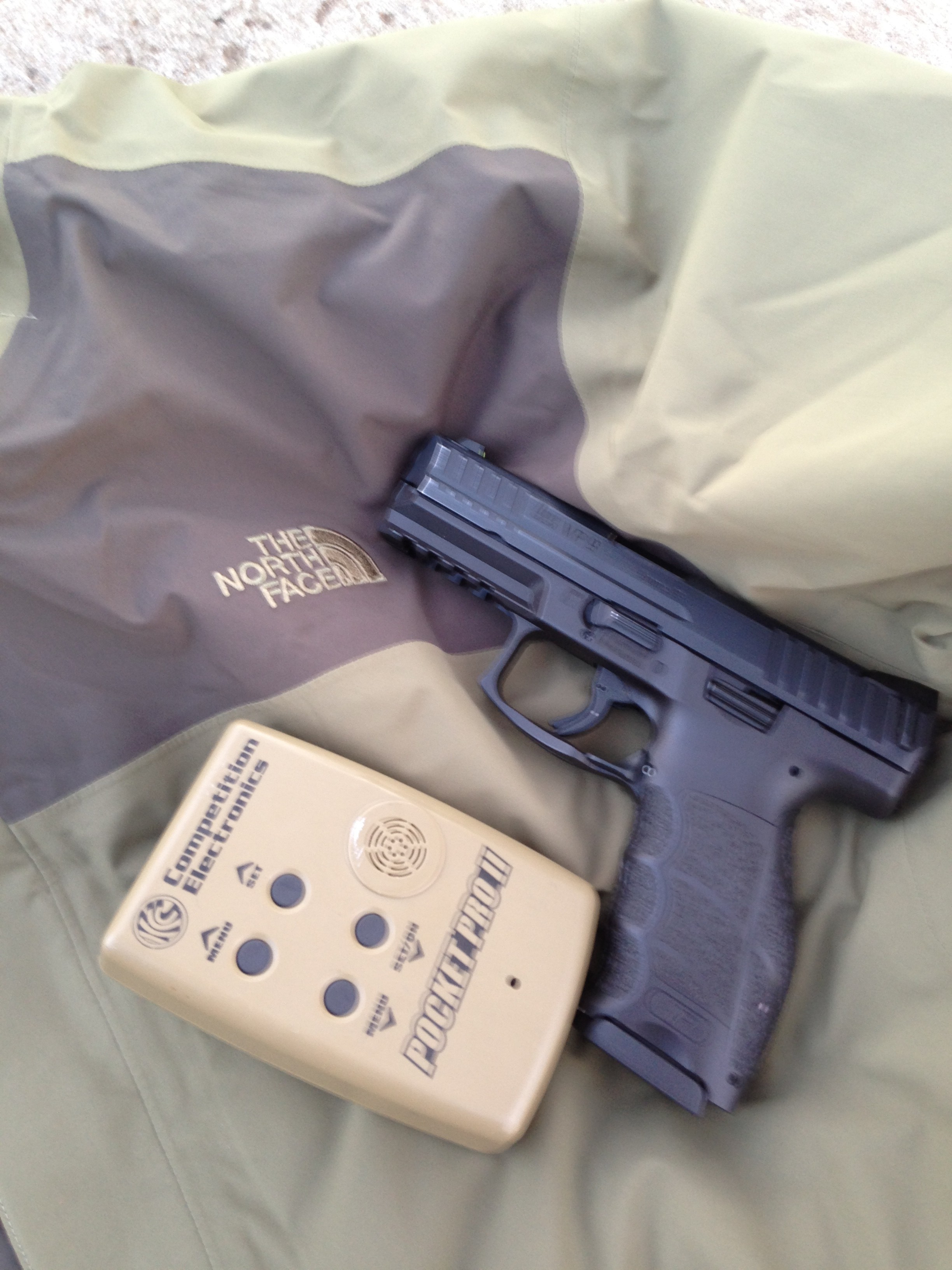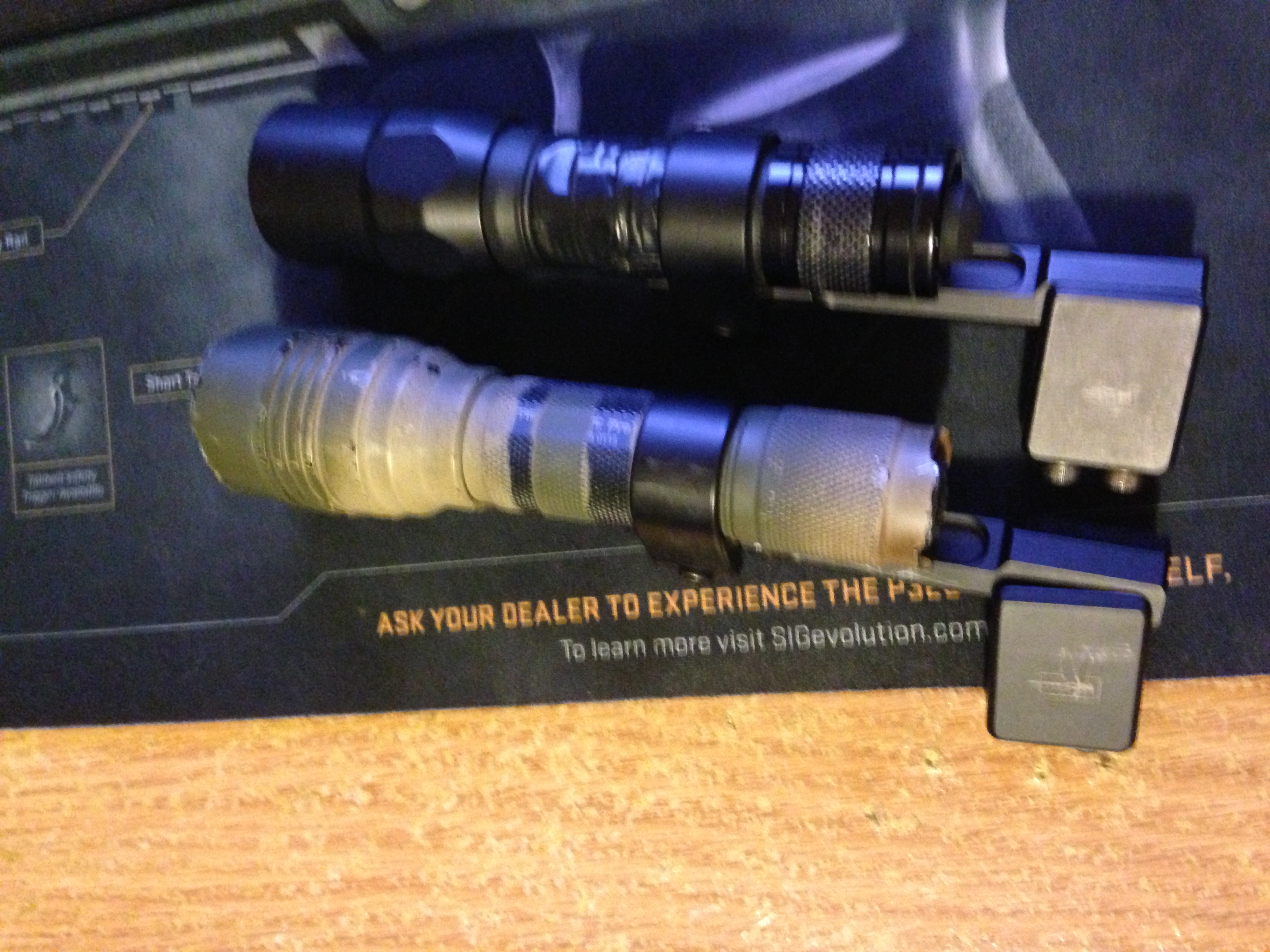With the prevalence of the Safariland 6004/6280 duty holster in modern law enforcement applications, it still shocks me that there are so many LE folks that still draw from an SLS equipped holster in the most inefficient manner. The Self Locking System (SLS) is the commonly seen rotating hood system that largely eliminated traditional snap holsters in modern holster systems. Technically classified as a Level II retention system (meaning it requires two actions to defeat the retention device), the SLS has pretty good security and can be disengaged with a single motion. Unfortunately, I still commonly see officers whåo draw from an SLS using two or more motions to disengage the hood before ever lifting the gun out of the holster. Continue reading
Gear review: PHLster holsters
Yes, there is another great alternative in appendix holsters. In my quest to find a great appendix holster, I’ve search and tried pretty much all that’s is out there..until a friend recommended to me a new holster from a Philly area company called PHLster (pretty catchy).
I tried two of their holsters for my Glock 19. One, full size named the Access and the other, more minimalist called the Skeleton. Both are inside the waistband and designed for appendix draw.
I’ll start with the more minimalist Skeleton. I was very happy when I opened the package and saw my thoughts realized in a holster without me talking with the designer. On my last holster review (The Q-Series) I liked the fact you could carry with basically a trigger guard cover and some belt retention device (clip or strap). The benefit of the Q-Series was the ability to re-holster the firearm. Of all the choices (at that time) I couldn’t find anything as good…until now. Continue reading
Fiber Optic Front Sights Revisited
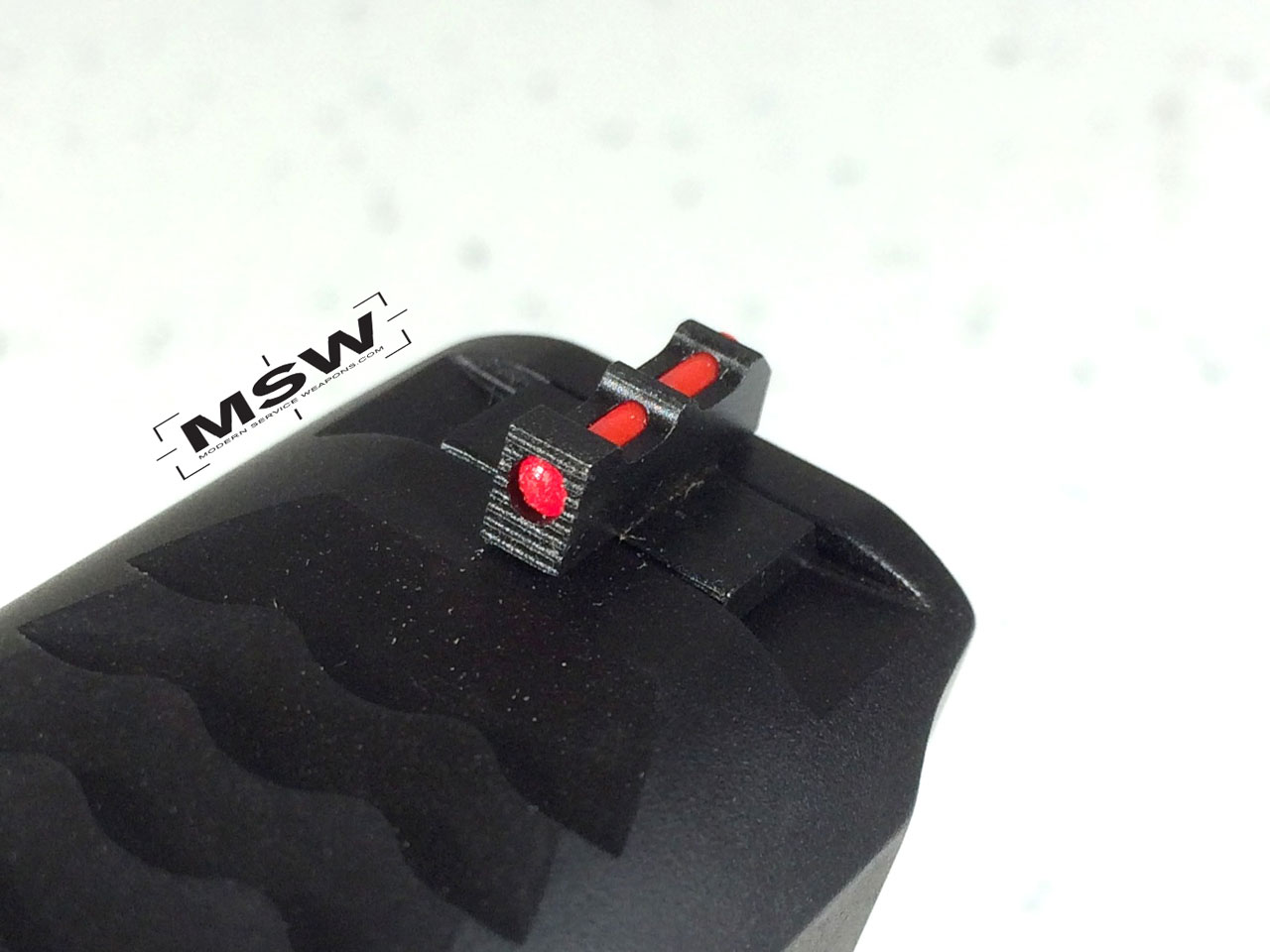
A properly designed fiber optic front is sufficiently durable for hard use. And in the unlikely event the fiber is damaged, the front sight blade is still usable.
Frequently, I am asked what sight configuration I prefer on a duty pistol. Most of those in law enforcement prefer tritium sights as that has what they have been taught as being the best to use in case of a low light encounter. While I am certainly not here to say that tritium inserts are a poor choice, they are not mine. My favorite choice of insert for a front sight is a fiber optic front with a black rear. I find that in most daytime lighting conditions, the front fiber is able to gather enough light to glow as bright as an Aimpoint dot. It is extremely easy and fast to acquire, and has held up quite well for me in work and off-work applications.
Recently, Frank Proctor posted an excellent article on this very topic on the RecoilWeb website. His article outlines some of the durability concerns as well as the advantages of the use of the fiber optics on pistol sights. The short of it is that if you’re carrying a pistol, you should have a light either with you, or attached to the gun. And if the fiber breaks or falls out, the front sight is just as usable as any set of non-illuminated irons.
Read Frank’s article HERE.
1911 Blueprints: Why You Need Them and How to Get Them

These ordnance drawings reproduced in high quality by Nicolaus Associates are a must have for anyone who works on 1911s or is simply a fan of the platform.
I periodically get inquiries from former students and visitors of this site asking if their 1911 is in or out of spec. With countless manufacturers of the 1911, and even more aftermarket suppliers making slides and various small parts, without the original source material (the original blueprints,) it is hard to tell whose parts are in spec and whose is not. The resource I used in the past were the Kuhnhausen Manuals. Unfortunately, the drawings are not complete and contain some typographical errors. A few years back, a buddy of mine turned me on to the original 1911 ordnance drawings available from Nicolaus Associates. Continue reading
Langdon Tactical Technologies: Advanced Pistol Skils
One of the things about the shooting community is that it is small, and anyone who has been in the industry for any period of time knows each other. I have had the pleasure of knowing Ernest Langdon for over a decade, and have always found him to be a genuine, down-to-earth, personable guy who just happens to have top shelf shooting skills. Sadly, I never had the opportunity to get on the range with him. So when a buddy invited me to sign up for Ernest’s Advanced Pistol Skills course that he was hosting for a private group of local LE guys, I jumped on it.
Unlike the “typical” competitive shooting champ, Ernest also has quite a bit of experience with which to frame the mechanical skills he’s developed over the years. In addition to winning more titles than I can count (without taking my shoes off), Ernest has a significant background including serving in various capacities in the Marine Corps as a Sniper School instructor and the HRP course. Ernest is the founder of LTT (Langdon Tactical Technologies) and is the guru when it comes to the Beretta 92/M9 platform. I was lucky enough to have him tune up a trigger on my personal 92FS years back and it is one of the smoothest triggers I’ve ever felt on a 92. (Thanks to his partnership with Wilson Combat, you can now have a similar trigger on yours as they do custom work on Beretta 92s now.) Continue reading
Loaf of Bread, Gallon of Milk
In the south (I’m sure that it exists nation wide) there is a reckoning that comes with each pending snowfall. Every local store will be ravaged of its supply of milk and bread. The weather guessers can predict a light dusting, or 1-3 inches per hour all night, and near fist fights will break out over milk and bread. Now, mind you, the loaf of bread/gallon of milk crowd all know that it is winter. Kentucky winters are unpredictable at best. But, the potential for loaf of bread/gallon of milk always exists. And basic winter weather preparation doesn’t change. But, like some strange, unexplainable phenomenon, each time there is snow, a fist fight is in the works over who gets the last loaf of Wonder bread. It matters not that the day after this predicted one inch snowfall that it predicted to have a high of 52 degrees that day. Loaf of bread, Gallon of milk. Continue reading
BODY ARMOR AND BALLISTIC RATED MATERIALS : FOR THE NON-SWORN?
Body armor and ballistic rated panels (for use in packs, briefcases, or other off-body use) are described best by the well-known Kafkaesque adage: It is better to have it and not need it, than to need it and not have it. I don’t mock the “tacticool” nature of body armor, and I avoid debating the SWAT or military “wannabe” aspects of owning it. (I readily acknowledge you are not alone if you do). I think armored materials are something worthy of consideration for anyone who frequents gunfighting classes, shoots regularly, or because of employment or other lifestyle particulars, has concerns of going where negligent friendlies or armed hostiles might be present. The days of body armor being only for LEOs passed (somewhat quietly) years ago.
Executive Summary: Let’s default to my deadly force paradigm: If you CAN afford it, and CAN do what you need to do when it is deployed (adequately conceal it, run and move effectively, maybe in confined space, and shoot, with additional bulky kit, maybe 18 pounds worth), go for it. If you acquire it, study up on and observe the manufacturer’s storage and care specs for the particular product. Unless a specific federal, state, or local law prohibits the ownership of such products, the non-sworn MAY own/wear body armor and ballistic-rated materials. SHOULD you buy such products? That is for you the reader to answer, as is how/when to use it. If you buy, buy the best-tested you can afford which is convenient to deploy, fits properly, and can be stored and maintained to suit your lifestyle. Expect some ribbing from “friends.” How about the MUST? It is beyond question the products save lives. Yours and/or the life of someone you “cannot live without,” regardless of who is slinging shots. At the very least, overt soft armor and plate carriers provide convenient, user-friendly platforms to attach identifying patches, pouches, and other “things.” And plates do provide a good weight-bearing workout. Continue reading
AWERBUCK REDUX : MORE WARRIOR WISDOM
I previously posted “Louis Awerbuck Remembered” (HERE). (Click on the book above for the link to the Kindle at Amazon). I wrote there I might have more gems to relate. As promised:
- If you have the time, go for the potentially most effective target area. If you don’t, get whatever meat and bone you can get, and maintain continuity of fire until the deadly force threat is gone. Continue reading
The Window Drill
Many of us struggle with a fast, efficient, and accurate first shot. One of the greatest problems I see with students seems to be the ability to drive the gun straight to the target. The presentation of delivering the gun to the target tends to get muddled with something other than a smooth, straight-like-it’s-on-a-rail presentation. Continue reading
Knowing
Knowing:
I like to use the word knowing in conjunction with the word CONFIDENCE. Is knowing and confidence the same? I’m going to talk about knowing in competition and the tactical world. So what is knowing? Knowing you have the confidence to make a shot. Knowing you can hit a steel target at 50 yards. At a 100 yards. In competition, having the confidence to take a 30 yard shot on a partial target because you’ve done your homework. You know what the sight picture looks like for that distance and what type of trigger pull you need. You’ve zero’d your gun and know where the rounds are going to land. Continue reading
The HK416D
The HK416D is the ultimate in the cool guy kit. I have been issued one for two years now. I was dead set against the 416 when we were looking. I was on the selection committee, and shooting the carbine was what won me over. Continue reading
SUPREME COURT WATCH : COURT TO DECIDE UNUSUAL CASE RELATED TO FEDERAL FIREARMS DISABILITY AND DISPOSSESSION
 The U.S. Supreme Court is once again considering a case which could significantly impact those who own firearms, both LEO and the non-sworn. (I previously wrote on the Abramski case, involving the ATF Form 4473 actual buyer rule, HERE and HERE). The recently submitted case, Henderson v. United States, arose in an interesting setting (equitable action for return of property under federal procedural rule), and has an unusual pedigree (the Court of Appeals decision is not officially published, and thus it is not precedential). Some have suggested Henderson reflects an irreconcilable conflict between federal statutes and a judicial rule. Others perceive it to be a forfeiture or 2nd Amendment case. I think it will not be decided as any of those. For a synopsis of the facts, and the legal issue(s) remaining after developments from the parties’ briefing, see the Henderson preview page at SCOTUSblog, HERE.
The U.S. Supreme Court is once again considering a case which could significantly impact those who own firearms, both LEO and the non-sworn. (I previously wrote on the Abramski case, involving the ATF Form 4473 actual buyer rule, HERE and HERE). The recently submitted case, Henderson v. United States, arose in an interesting setting (equitable action for return of property under federal procedural rule), and has an unusual pedigree (the Court of Appeals decision is not officially published, and thus it is not precedential). Some have suggested Henderson reflects an irreconcilable conflict between federal statutes and a judicial rule. Others perceive it to be a forfeiture or 2nd Amendment case. I think it will not be decided as any of those. For a synopsis of the facts, and the legal issue(s) remaining after developments from the parties’ briefing, see the Henderson preview page at SCOTUSblog, HERE.
Like Abramski, Henderson was once an LEO (Border Patrol agent). He entered a guilty plea to marijuana trafficking, for which he received a six-month prison sentence. The narrow question “officially” presented to the Supreme Court was whether after federal conviction, a judge may order the government to transfer non-contraband firearms voluntarily surrendered (to the FBI) as a condition of pretrial release to: a designated person, such as one to whom the defendant has sold the firearms, or; someone (who might be influenced by the defendant) to sell them, for the benefit of the defendant. I think the Court may remand for further proceedings to implement the law/procedure it decrees. Whatever the actual holding, I hope the Court will: provide guidance from which firearms owners (whether or not criminally accused or convicted) and their attorneys can implement a plan to effect dispossession upon firearm disability, and; put to rest erroneous legal positions (FFL requirement for consignment dispossession, necessity for the government or a court to inquire of and approve dispossession arrangements) advanced by the government. Continue reading
Robar NP3 AR15 Bolt Carrier Group
If you have more than a couple rounds down the barrel of the AR15 platform, you should know the system works but isn’t necessarily the cleanest. For anyone who actually shoots their gun instead of keeping it clean and pretty, the cleaning of the bolt carrier group in particular is always a fan favorite. Your choices are to soak it in solvent of some type of spend a good amount of time with a scraper of some type trying to break through the layer of fossilized carbon built up around the gas rings on the bolt. This is where aftermarket finishes and treatments have come into play in recent years in an effort to battle the carbon buildup. I have never been a fan of the flashy silver bolt carriers shining through the ejection port of a AR. I made a habit of writing them off as flash as my AR’s had always run just fine without them. Continue reading
When .22 splits aren’t fast enough……..
Recently, I was evaluating a HK VP9 that was done up by Grayguns, Inc. I was shooting string after string on the timer. I noticed that somewhere south of .22 splits on multi-shot strings, my accuracy fell apart. I dismissed the VP9 as being inferior, due to the stock box P320 Carry giving me nice little piles of bullet holes at .16-.18 splits. Continue reading
Buy Once, Cry Once
I seem to keep learning the same lesson, over and over again. Buy once, cry once. The lower light is a Streamlight 600 lumen. I picked it up at a bargain of $50. I liked it a lot, and at the time my Surefire’s were all 200 lumen. After a little bit of T&E, I mounted it on my issued HK416D. I trained and used it at work for about a year without issue. Continue reading





